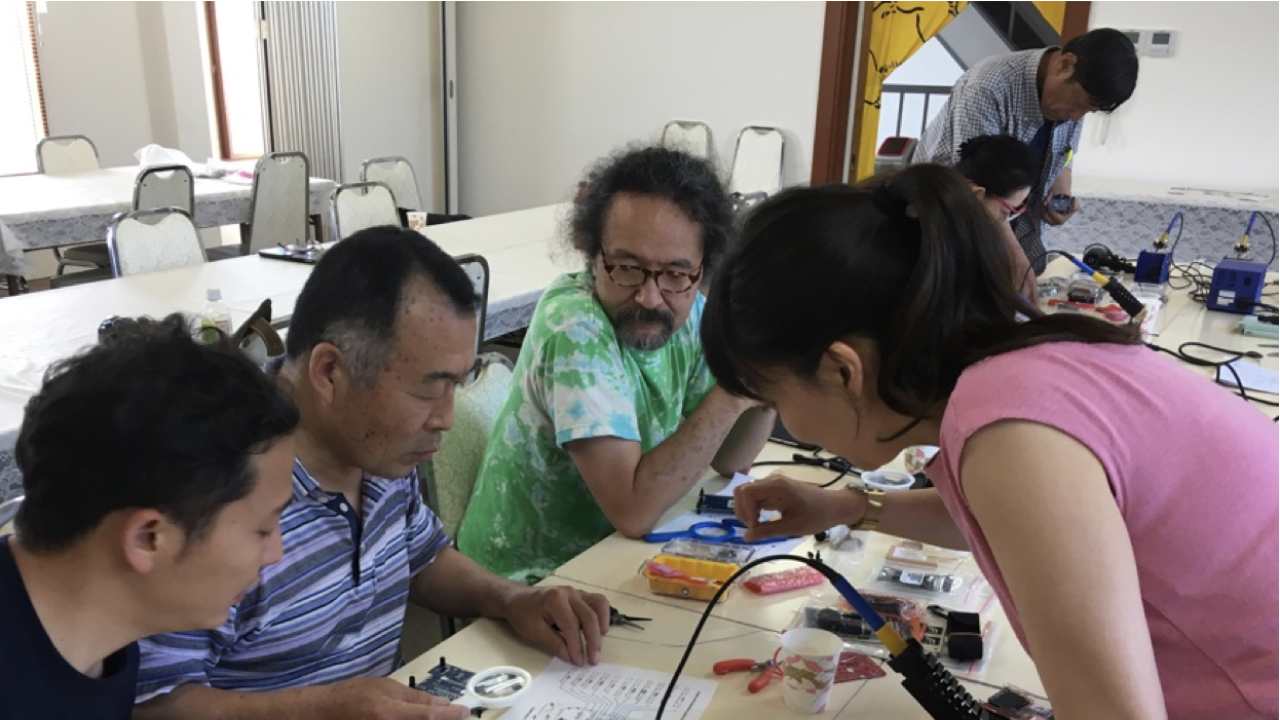
Scientific research and data collection are not always carried out within academia walls or behind lab doors. Thanks to the concept of citizen science, anyone can participate in an exciting science adventure, from pollution measurements to the cataloguing of wild herbs, or from participatory health research to earthquake monitoring.
ICTP and its UN sponsors, the International Atomic Energy Agency (IAEA) and UNESCO, have a history of organising workshops that harness citizen science with environmental monitoring. Recently, the two organisations held an online workshop on "Citizen Science with Application to Nuclear, Seismic and Air Quality Monitoring", which attracted more than 100 participants from 46 different countries around the world for an intense deep-dive into the subject.
The two-week workshop combined theory with hands-on activities. A roster of international speakers contributed to a rich programme of lectures and talks, including citizen science case studies involving nuclear monitoring, seismic sensors and air quality monitoring. Part of the workshop was devoted to citizen science applications and to practical work on the development of low-cost sensors, in order to better understand how to balance low-cost scientific tools and academic rigor.
One highlight of the workshop was the presentation of a citizen science project that couples interesting scientific discoveries with a high educational value. The Unistellar Network is a project that allows citizen scientists who are passionate about outer space to work with professional astronomers in various fields of space research. The project is carried out in partnership with the SETI Institute, a non-profit research organization located in Silicon Valley, close to the NASA Ames Research Center. It involves a global array of digital telescopes - the eVscopes, as in "enhanced vision telescopes" - interconnected online in a network, and capable of collecting faint, distant light and to observe celestial bodies such as asteroids, comets and planets far away. The amount of data collected by the Unistellar citizen scientists from around the world is analysed by scientists at the SETI Institute, who then develop models and predictions, and share their results with the whole community.
Workshop attendees also heard about Safecast, an organisation that has just celebrated 10 years of activity and has built a community of more than 5000 volunteer citizen scientists worldwide, making it one of the best examples of using citizen science to combine scientific data collection, the involvement of society and educational potential.
Safecast is a Japan-based international non-profit organisation, created in 2011 in the wake of the Fukushima earthquake and tsunami, and the resulting nuclear disaster. Completely relying on the work of volunteers, Safecast was established with the mission to collect environmental data, initially focussing on environmental radiation, and then widening the scope of their activity to the monitoring of air quality in general.
The goal of the organisation is to produce a solid collection of data that is useful and accessible for everyone: all Safecast data is published into the public domain and is available free of charge.
"From 2011 through the end of 2013, there was a strong sense of urgency around Fukushima," says Azby Brown, Safecast Lead Researcher, "people were looking for something to do, some way to contribute to the situation, some way to help." In practice, people were trying to gather as much information as possible on the radiation rate following the collapse of the Fukushima nuclear plant, but this was not easy, as detectors and geiger counters were in short supply. "After a very fruitful brainstorm we thought we could try to make mobile detectors that could be mounted on a car and connected to GPS," adds Safecaster Joe Moross, "we did some very rough experiments, and it worked great. We could then begin to respond to the emergency and to the lack of detectors and the need to maximize the amount of data. This was how Safecast began, and then it grew and grew until what we are now."
Safecast's success is partially due to the instruments that they distribute to their network of citizen scientists, such as air or solar sensors and portable geiger counters. One of their most popular devices is the bGeigie Nano, a mobile, GPS-enabled, radiation sensor that can be mounted on the outside of a car window, or used on bicycles, trains, planes, and other modes of transportation.
Ten years after the Fukushima emergency, the role of Safecast is still as relevant. "First, we are trying to help establish a global independent baseline of radiation around the world," says Brown. "Then, we are also trying to build and share resources in order to prepare the public in case of another potential emergency, with information, education and stakeholder engagement."
"Education is essential in understanding data and understanding the context," adds Moross, "and ultimately in understanding the meaning of things. We don't tell people: this is safe, and this is dangerous; but we say: if you want to find out, this is how you find out. And then we can discuss what those findings really mean."
“I am glad about the interest in this topic," says Marco Zennaro, ICTP research scientist and one of the workshop's organizers. "Citizen Science is a key element aiming inter alia to extend collaboration with societal actors beyond the scientific community by opening up practices and tools that are part of the research cycle. Fostering Citizen Science and balancing low cost scientific tools with academic rigor is crucial for the success of the Open Science paradigm. I look forward to the next edition of the workshop.”
--- Marina Menga
















